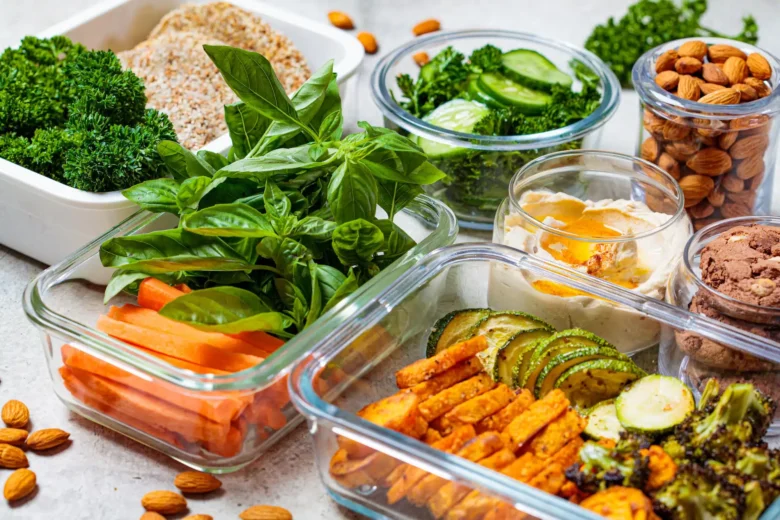Juggling work deadlines, family commitments, and personal responsibilities often leaves little time for healthy eating. The result? Many people resort to expensive takeout or processed convenience foods that drain both their wallets and their well-being.
Meal prep offers a practical solution to this common dilemma. By dedicating just a few hours each week to preparing nutritious meals in advance, you can enjoy home-cooked food that’s both budget-friendly and health-conscious. This approach transforms your relationship with food from reactive to proactive, putting you back in control of what you eat and how much you spend.
The best part about meal prep is its flexibility. You don’t need to be a culinary expert or own expensive equipment to get started. With some basic planning and a few simple recipes, you can create delicious, wholesome meals that will carry you through even the busiest weeks.
Why Meal Prep Works for Your Health and Budget
Meal prepping delivers benefits that extend far beyond convenience. When you prepare meals in advance, you gain complete control over ingredients, portion sizes, and nutritional content. This means you can reduce sodium, eliminate preservatives, and increase the vegetables and whole grains in your diet.
The financial advantages are equally compelling. Home-cooked meals typically cost 60-70% less than restaurant meals or meal delivery services. By buying ingredients in bulk and using them across multiple meals, you minimize food waste and maximize your grocery budget. A single chicken breast, for example, can be transformed into protein for three different meals throughout the week.
Time savings represent another major benefit. While meal prep requires an upfront time investment, it eliminates daily cooking decisions and reduces kitchen cleanup throughout the week. Many people find they actually spend less total time in the kitchen when they batch-cook their meals.
Planning Your Meals for Success
Effective meal prep starts with smart planning. Begin by setting a realistic weekly food budget and stick to it. Track your spending for a few weeks to understand your baseline, then look for opportunities to reduce costs without sacrificing nutrition.
When selecting recipes, prioritize dishes that use similar base ingredients. If you’re buying spinach for one recipe, find two or three other meals that can incorporate spinach as well. This strategy reduces waste and simplifies your shopping list.
Focus on versatile ingredients that can be prepared in multiple ways. Rice, eggs, chicken thighs, seasonal vegetables, and canned beans form the foundation of countless healthy, affordable meals. These staples are often available at lower prices when purchased in larger quantities.
Create a weekly meal schedule before you shop. This doesn’t mean every meal needs to be planned to the minute, but having a general framework prevents impulse purchases and ensures you buy everything you need in one trip.
Budget-Friendly Meal Prep Recipes
Mediterranean Chickpea Bowls
This protein-rich bowl costs approximately $2.50 per serving and provides a complete nutritional profile. Combine one can of drained chickpeas with diced cucumber, cherry tomatoes, red onion, and crumbled feta cheese. Dress with olive oil, lemon juice, oregano, salt, and pepper. Serve over a bed of cooked quinoa or brown rice. This recipe makes four generous servings and keeps well in the refrigerator for up to five days.
Sheet Pan Chicken and Vegetables
For under $3 per serving, this one-pan meal delivers lean protein and fiber-rich vegetables with minimal cleanup. Season chicken thighs with paprika, garlic powder, and Italian herbs, then arrange on a sheet pan with chopped sweet potatoes, bell peppers, and onions. Drizzle everything with olive oil and roast at 425°F for 25-30 minutes. The chicken thighs stay moist and flavorful while costing significantly less than chicken breasts.
Vegetarian Chili
This hearty, plant-based option costs less than $2 per serving and freezes beautifully. Sauté diced onions, carrots, and celery, then add canned diced tomatoes, kidney beans, black beans, corn, and vegetable broth. Season with chili powder, cumin, and paprika. Simmer for 30 minutes and portion into containers. This recipe easily doubles and provides protein from the bean combination.
Egg and Vegetable Breakfast Muffins
These portable breakfast options cost about $1 per serving and can be customized with whatever vegetables you have on hand. Whisk together 12 eggs with salt, pepper, and a splash of milk. Pour into greased muffin tins filled with diced vegetables like spinach, bell peppers, and mushrooms. Add a small amount of cheese if desired. Bake at 350°F for 18-20 minutes. These muffins freeze well and reheat quickly in the microwave.
Storage and Reheating Tips
Proper storage is crucial for maintaining food safety and quality. Invest in a set of glass containers with tight-fitting lids, as they’re more durable than plastic and don’t retain odors or stains. Allow hot foods to cool completely before refrigerating to prevent condensation and bacterial growth.
Most meal-prepped foods stay fresh in the refrigerator for 3-4 days. If you’re preparing meals for longer periods, freeze half of your portions and move them to the refrigerator the night before you plan to eat them.
When reheating, add a splash of water or broth to prevent foods from drying out. Microwave in 30-second intervals, stirring between each interval to ensure even heating. Some foods, like roasted vegetables, actually improve in flavor after a day or two as the seasonings have time to meld.
Weekly Meal Prep Schedule
|
Day |
Prep Task |
Time Required |
|---|---|---|
|
Sunday |
Grocery shopping and washing produce |
1 hour |
|
Sunday |
Cooking grains and proteins |
1.5 hours |
|
Sunday |
Chopping vegetables and assembling meals |
45 minutes |
|
Wednesday |
Mid-week prep refresh (wash salad greens, prep snacks) |
20 minutes |
Frequently Asked Questions
How long do meal-prepped foods stay fresh?
Most cooked foods remain safe and tasty for 3-4 days in the refrigerator when stored properly. Foods with higher moisture content, like salads with dressing, should be consumed within 2-3 days. Frozen meal preps can last up to three months.
What foods don’t meal prep well?
Avoid preparing foods that become soggy or lose texture when stored, such as lettuce-based salads, fried foods, or dishes with delicate herbs. Instead, store dressings and sauces separately and add them just before eating.
Can I meal prep if I don’t have much cooking experience?
Absolutely. Start with simple recipes that require minimal cooking skills, like grain bowls, sheet pan meals, or slow cooker dishes. Focus on techniques like roasting, which is forgiving and produces consistently good results.
How much money can meal prep actually save?
The average person spends $12-15 per meal when eating out regularly. Home-prepared meals typically cost $3-5 per serving, including ingredients and your time. This can translate to savings of $200-400 per month for someone who frequently relies on restaurant meals.
Start Small and Build Your Routine
Meal prep doesn’t require a complete lifestyle overhaul to be effective. Begin by preparing just two or three meals for the week, then gradually expand as you become more comfortable with the process. The key is developing a sustainable routine that fits your schedule and preferences.
Remember that meal prep is a skill that improves with practice. Your first attempts might not be perfect, but each week you’ll discover new techniques and combinations that work for your taste and budget. The investment in time and planning pays dividends in improved health, reduced stress, and significant cost savings.
Consider starting this weekend with one simple recipe from this guide. Choose ingredients you already enjoy, and don’t be afraid to modify recipes based on your preferences or what’s available at your local grocery store. The goal is creating a system that supports your health and financial goals while fitting seamlessly into your busy life.




